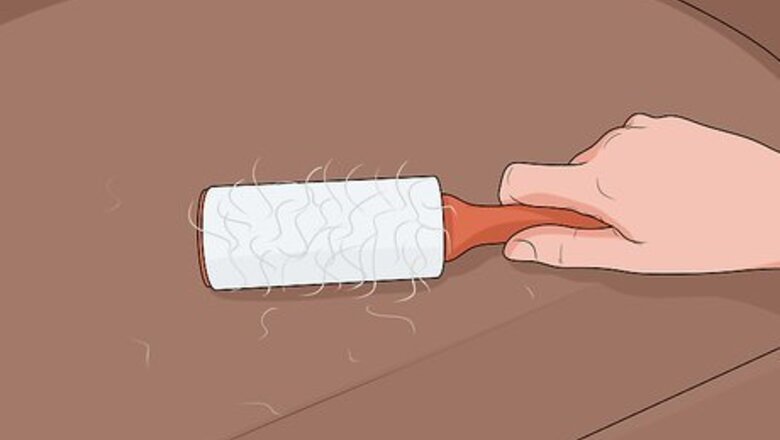
views
Get Dog Hair off Furniture
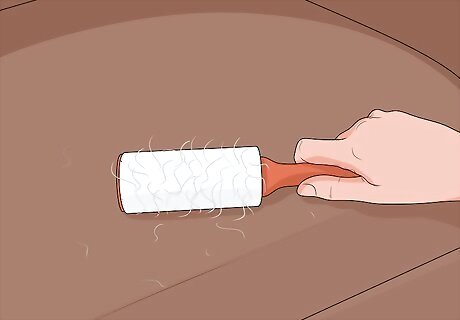
Use a lint roller. You can roll this device over the surface of your furniture to pick up dog hair. You can find a lint roller at any drug or grocery store. You can use a lint roller on furniture, clothing, and even your dog itself. The adhesive isn't strong enough to harm skin, furniture, or clothes.

Use tape. Flatten a section of sticky tape against the furniture, let it sit for a few moments, and peel it away to remove stubborn dog hairs. Use broad sections of tape to make the process go more quickly. Duct tape and masking tape are good choices. You may have to do this many times to get all the hair off. Consider making yourself a makeshift lint roller using tape, preferably masking or duct tape. Rip off a generous piece of tape and put it around your hand so that the sticky side is facing out. Then pat the furniture where the hair is so that the hair comes off with the tape. You may have use several pieces of tape depending on how much hair there is. Be careful using duct tape (and other especially strong types of tape) on furniture that is coated in paint or another thin veneer. If you do use duct tape, don't leave it on for more than a few seconds. Strong adhesives might peel away paint from your furniture.
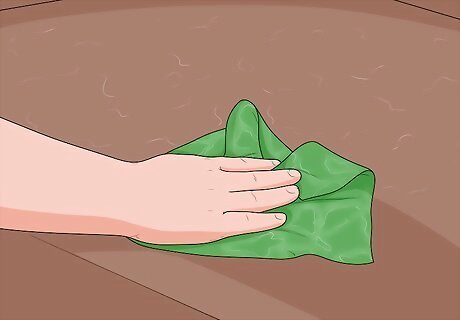
Use a damp washcloth. Removing pet hair from any cloth surface is easy if you use a damp washcloth. Wipe cushions or clothing in one direction only and the hair will lift off. You can also try a damp sponge mop to remove pet hair from your carpets. Again, wipe in one direction only, and the hair will pile up and can be easily picked up by hand.
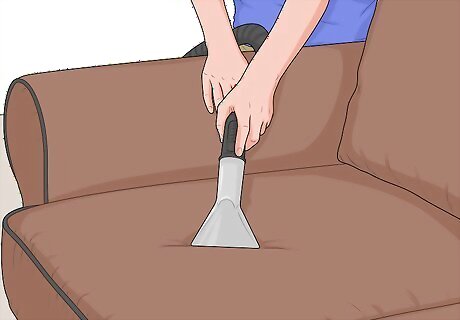
Vacuum the furniture. Use the detachable hose of a vacuum-cleaner, use a small handheld vacuum, or lift a vacuum onto the surface of a couch or chair. Depending on the type of furniture, vacuuming may or may not work. To make it easier to vacuum your furniture, use a window squeegee to collect most of the fur in one spot. Simply run the squeegee over the furniture in the same way you would a window. Push all of the fur into one spot on the couch, then vacuum it up. If there is a very large amount of fur, don't vacuum it. This may clog up the vacuum or even damage it. Consider using a shampoo vacuum cleaner for fabrics. Make sure that your pet shampoo product is safe to use on furniture. In the future, consider brushing your dog more frequently or covering your dog's favorite furniture with blankets in order to prevent excessive shedding.
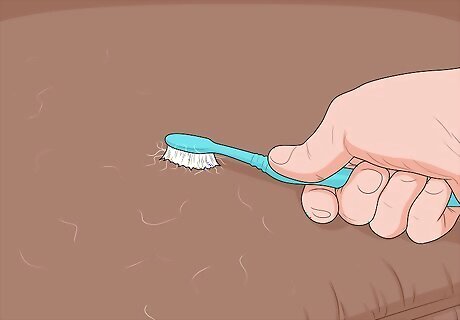
Use a toothbrush. For just a few clingy hairs, try using an old toothbrush. Dog hair is hard to clean out from between brush bristles, so do not use a toothbrush that you plan to use for anything else. For an easier option, look for a fur removal brush, which is larger than a toothbrush. It's specially designed to collect loose fur. You can find a fur removal brush at your local pet store or online.
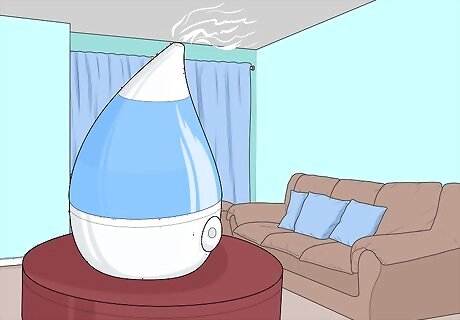
Don't let your home get too dry. Static electricity and low humidity make already annoying pet hair that much worse. Mitigate these two factors, and fur will remain more friend than foe.

Remove pet hair from upholstery and fabric with rubber gloves. Wear a pair of disposable rubber gloves, and dampen them with water so the hair will stick. Run your hand over the surface to attract hair. Simply rinse off the glove when it’s covered with hair, and repeat as needed. If you don't have rubber gloves handy, try a slightly wet sponge instead. This method doesn’t use up lots of tape needlessly. As another option, use a pet grooming or deshedding glove, if you have one. These gloves are very effective for collecting fur. You can also spray a mix of water and fabric softener onto your upholstered furniture, then wipe the hair off. To remove pet hair from wooden furniture, use a soft cloth and furniture polish or anti-static dusting spray. The spray will eliminate the electric charge, making removal easier and lessening the likelihood that the hair will re-stick.
Prevent Shedding on Furniture
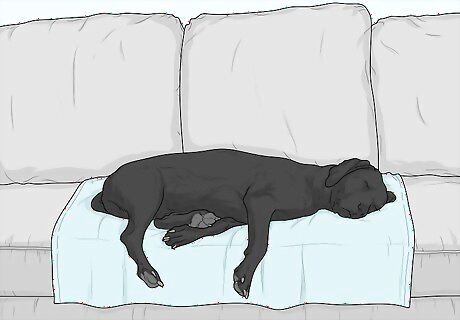
Cover your furniture. Many people use plastic sheeting to preserve their furniture. However, this method is often viewed as pointless or inconvenient due to noise, discomfort, and opacity of the plastic. You may also consider spreading out an old towel or blanket where your dog likes to lay. You can wash the towel whenever you like, and you can put it away when guests come to visit. If your dog tends to climb on one particular piece of furniture and lay in the same spot, you may be able to keep hair off that furniture by protecting the spot. Some pet stores sell furniture covers specifically made for dogs.
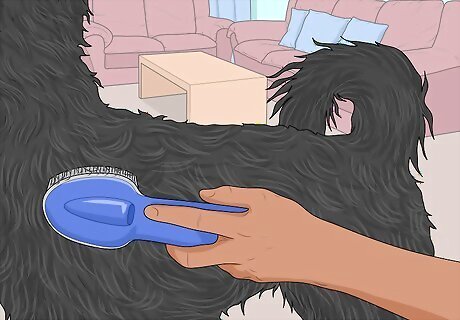
Groom your dog. Consider brushing your dog more frequently, giving it haircuts, and giving it baths. Use a grooming brush to comb away loose hair. Brushing your dog about two days a week dramatically cuts down on the amount of fur tumbleweeds rolling through your living room. Give your dog a haircut once a month. It may stop shedding so much fur if you take control of the process. Give your dog a bath once or twice a month, or as frequently as you like. After the bath, let it stay outside for about an hour to dry off. Consider putting a stocking or thin sock over the vacuum hose, and then vacuuming your dog. You may not be able to get him or her to stand still.
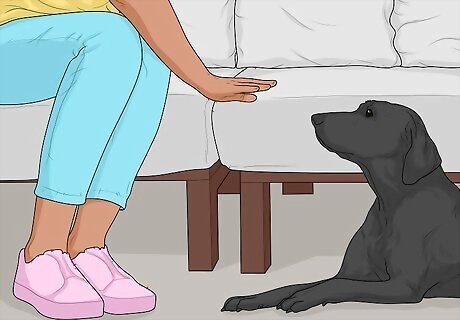
Teach your dog not to climb on the furniture. If your dog won't stop climbing all over your bed or couch, try training your pet to sleep on the floor instead. Scold your dog when it climbs on the furniture, and make it clear that it's wrong. If you are firm and persistent, you can retrain your dog and keep hair off of your furniture altogether. Bear in mind that if your dog sheds a lot, you may still need to vacuum frequently to keep dog hair off of the floor.
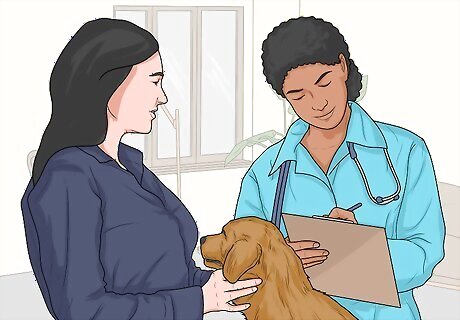
Consult your vet. If you think your dog might be losing hair for a medical reason, consult a vet for help. Your vet may prescribe hair-loss medication, or may be able to identify some other treatable condition that is causing the hair-fall.




















Comments
0 comment